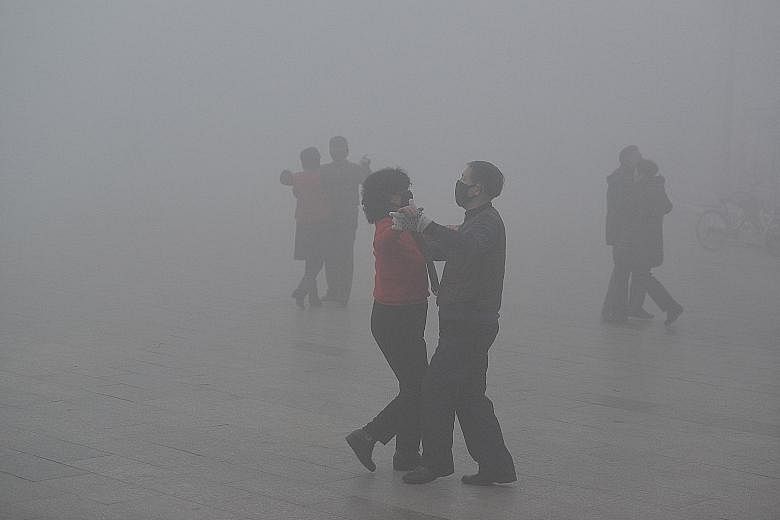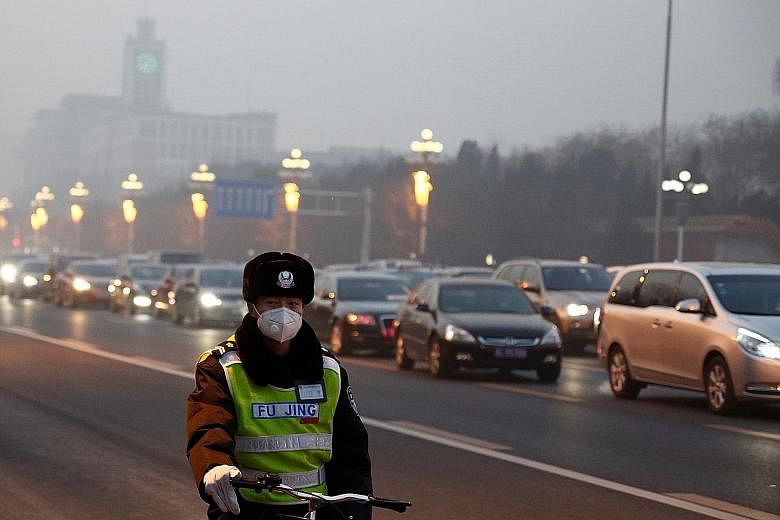BEIJING • China has issued its first red alert for fog as the air situation deteriorated in the north and east of the country yesterday.
Travellers could face further delays as more flights are suspended or cancelled, while highways might also be closed. The red alert is the highest level in China's three-tier system of yellow, orange and red warnings for fog.
From yesterday to today, thick fog in parts of Beijing, Tianjin and Hebei province, as well as Henan, Shandong, Anhui and Jiangsu provinces would reduce visibility to less than 500m, Xinhua news agency reported, citing the National Meteorological Centre.
In extreme cases, visibility may fall below 50m in those regions, the centre added.
Drivers were advised to slow down to safe speeds, and airports, highways and ports were told to take the necessary safety measures.
Yesterday's fog delayed the departure of two Shanghai-bound Singapore Airlines (SIA) flights from Singapore, said an SIA spokesman.
Meanwhile, an orange alert for smog is still in effect in northern, eastern and central China, which saw hundreds of flights cancelled and highways closed over the New Year holiday. The smog is expected to last until Jan 8, Xinhua said.
Pollution alerts are common in northern China, especially during cold winters, when energy demand, much of it met by coal, soars.
China is in the third year of a "war on pollution" aimed at reversing the damage done to its skies, soil and water after decades of untrammelled economic growth.
It has created emergency response systems that restrict traffic and shut down factories and construction sites during periods of heavy smog, and it has also vowed to punish local officials and enterprises that break rules.
China's air pollution, it appears, is also affecting its neighbours.
Yesterday, the air in Seoul and surrounding Gyeonggi province was "bad", according to the South Korean weather agency's data. South Korea uses a four-scale system of good, normal, bad and very bad.
According to the state-run Korea Environment Institute (KEI), up to 70 per cent of the country's fine dust particles and other airborne pollutants originated in China and other countries such as Mongolia.
The study was conducted on a total of 254 days between 2001 and 2008, when Seoul's ultrafine dust particle concentration was at 100mcg per cu m or higher.
Researchers at the KEI also noted that three Chinese provinces adjacent to Korea topped the list in China for high fine-dust emission levels.
A 2006 study conducted by Nasa and environmental experts in China showed that Shandong province was releasing 1.7 million tonnes of air pollutants annually, followed by Hebei with 1.3 million tonnes and Jiangsu with 1.2 million tonnes.
"These three provinces, all located not so far from the Korean peninsula, are known for being heavily populated areas with a high number of automobiles and big factories.
"They emit an enormous amount of air pollutants each day," said Mr Lee Seung Min of the KEI, who took part in the study.
REUTERS, XINHUA, KOREA HERALD/ ASIA NEWS NETWORK
• Additional reporting by Melissa Lin


